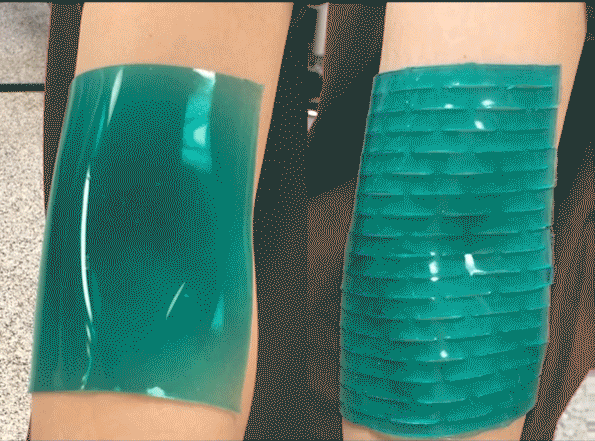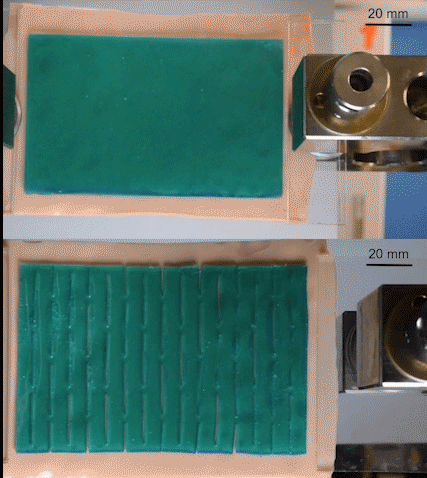Researchers at MIT have perforated elastomer film with “kirigami” slits using 3D printed molds to improve the adhesiveness of the film. Kirigami is a variation of origami that involves folding and cutting paper to produce patterns or structures, such as snowflakes.
Ruike Zhao, a postdoctoral associate at MIT’s Department of Mechanical Engineering, says that the kirigami patterned film has applications in a range of consumer products from medical bandages to wearable electronics.
Kirigami slits sticks
The MIT team tested the film with adhesive on a volunteer’s knee. The kirigami film remained adhered after over 100 knee bending cycles, whilst the film without slits detached after bending once.
Each time the volunteer bent their knee, the slits at the center of the film opened up the most, whilst slits at the edges remained closed. The kirigami slits allowed the film to stretch, providing better grip. The opening of the slits in the center relieved tension on the edges of the film, preventing debonding.

3D printed kirigami
Researchers poured liquid elastomer in 3D printed molds to produce the films. The molds featured a raised pattern of lines at various spacings, which would form slits once cured and lifted from the mold. The adhesive applied to the film is similar to what is used for medical bandages.
Researchers performed stretch tests to determine the amount of stretch the film could withstand before peeling away. They found that when pulled along a flat plane, the slits in the center opened and debonded first. As in the knee test the slits at the edges remained closed.
Ruike identified three properties that allow the film to adhere so well:
- Shear-lag, where deformation of film in one part reduces stress on other parts
- Partial debonding, where film segments around an open slit keep a partial bond to the surface
- Inhomogenous deformation, where the film maintains overall adhesion even as parts of the underlying surface move or stretch unevenly.
Ruike says that “Adhesives like these bandages are very commonly used in our daily life, but when you try to attach them to places that encounter large, inhomogenous bending motion, like elbows and knees, they usually detach,”
“The current films are purely elastomers. We want to change the film material to gels, which can directly diffuse medicine into the skin. That’s our next step.”

Last year, Marc Clement, chairman of Swansea University’s Institute of Life Science, said trials were to begin of 3D printed smart-bandages laced with particles of electro-conductive ink.
For the latest medical 3D printing news, subscribe to the 3D Printing Industry newsletter, follow us on Twitter, and like us on Facebook.
Looking to get involved in a new project? Hiring for a project? Join the 3D Printing Jobs board.
Vote now for the 3D printing companies of the year in the 2018 3D Printing Industry Awards.
Featured image shows kirigami film stretching to remain adhesion. Photo via MIT Department of Mechanical Engineering.

